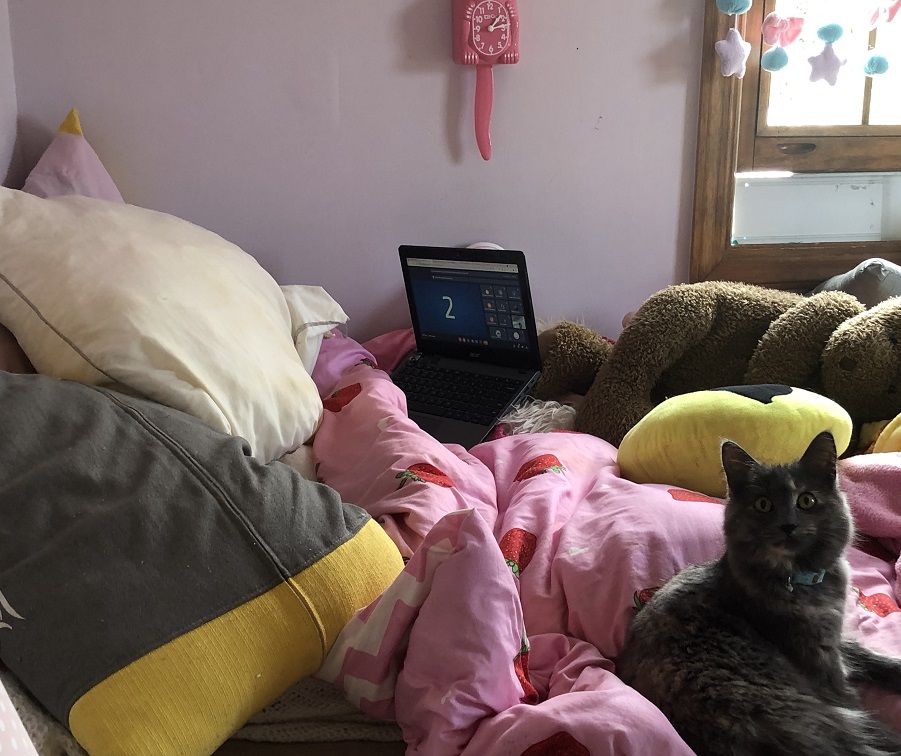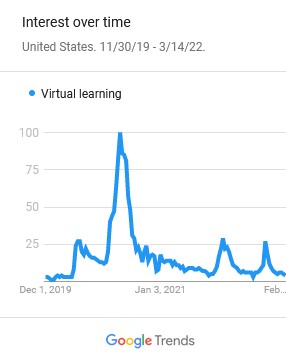When the pandemic started in March 2020 schools were not prepared for the challenges that lay ahead. Lockdowns, stay-at-home orders and quarantines severely impacted students and teachers. An article published on AmericanProgress.org dated July 6, 2021 recalls that “there was a scramble to adjust to remote learning. Classes went online, school meal distribution became grab-and-go, and extracurricular activities and services were paused” (Ferren). Students were provided with Chromebooks (which were slow and difficult to use) – the more well off schools provided Apple laptops. Google Classroom, Canvas and Zoom allowed students to work remotely and provided face to face communication with each other and their teachers.
Some students found this new learning format difficult to cope with especially for students with ADHD. The photo below sums up the whole virtual learning experience. When I checked in on my teenager to make sure she was focused in virtual school, she was fast asleep under the covers while her Chromebook was logged in to a Math class and her cat got more out of the lesson than she did.

Social Media Trends as of May 10, 2022
Facebook #virtuallearning: 265,000 people are posting about this
Instagram #virtuallearning: 974,232 posts
TikTok #virtuallearning: 356.9 million views
YouTube #virtuallearning: 9,200 videos and 2,500 channels
Google Trends: “virtual learning” took off in March 2020 during the initial outbreak of the pandemic, reaching its peak the week of August 16 that year as schools were making the decision to start the fall term off remotely.

Sources:
Ferran, Megan. “Remote Learning and School Reopenings: What Worked and What Didn’t.” AmericanProgress.org. July 6, 2021. URL: https://www.americanprogress.org/article/remote-learning-school-reopenings-worked-didnt/.